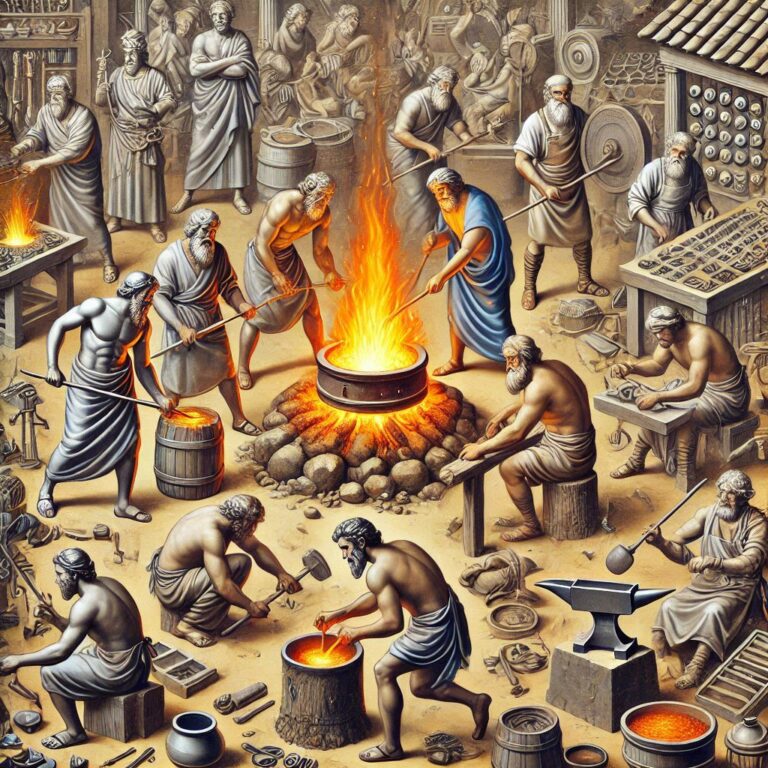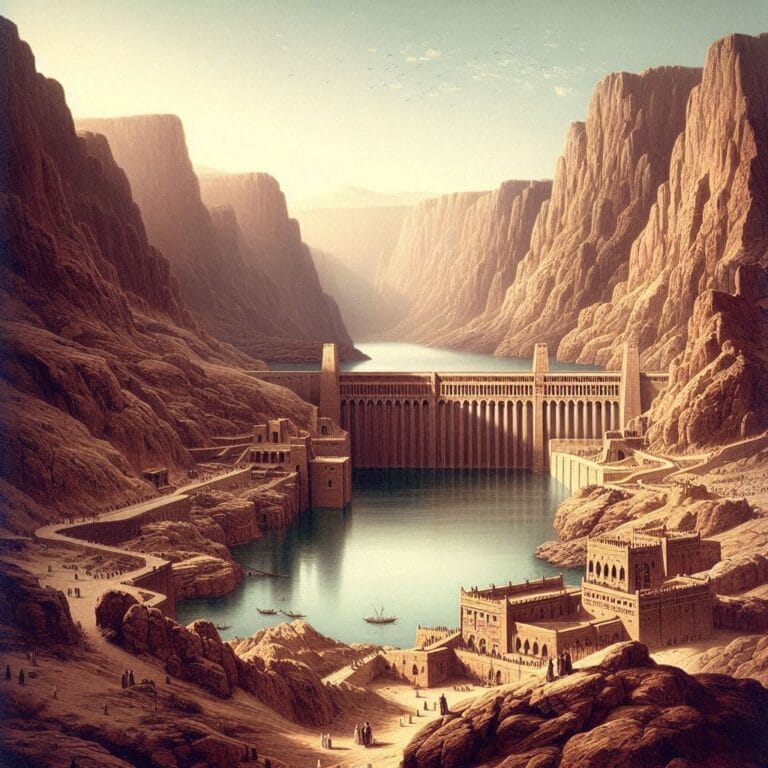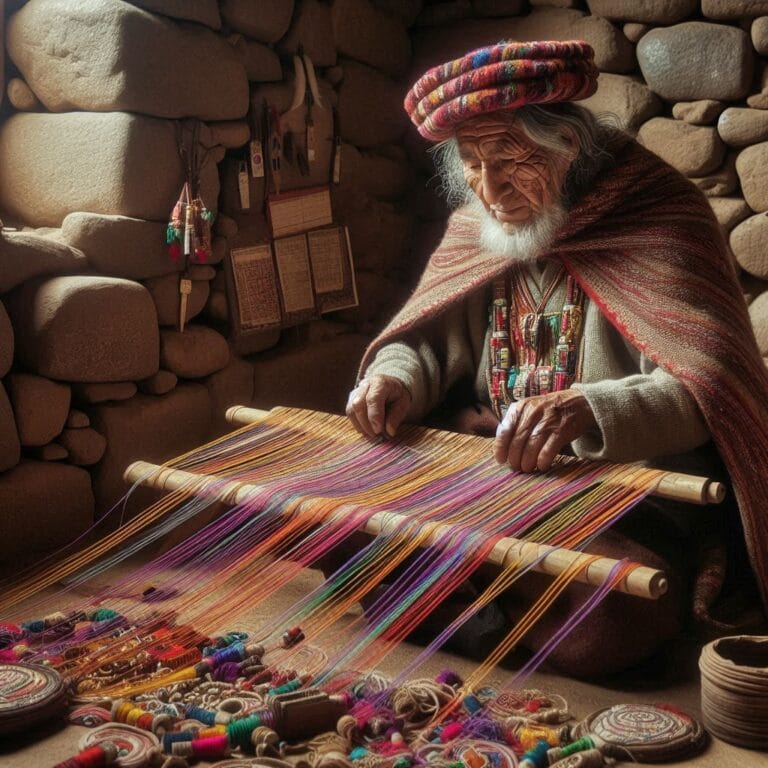
History Of Agriculture
Agriculture has thousands of years of history and has been a key driver of human civilization. In fact, one of the most important moments in human history is frequently cited as the development of agriculture. Archeologists and anthropologists have struggled to answer the questions for more than a century.
- Why did humans give up foraging and adopt Farming? (A life that has sustained them for thousands of years.)
- Did it happen at the same time all over the world? (or just a few humans at some places farming and many others not.)
- What was its impact on human life and the environment?
Around 12000 years ago humans were living all over the continents from the icy Arctic to the deserts of Australia, except Antarctica. Wherever they live they survive through collective learning, Technological advancement, and adapting to the surrounding environment. But what enables them to cultivate their own food? The history of agriculture is a fascinating story of invention, adaptation, and development, spanning from the earliest domestication of plants and animals to modern industrial farming.
Origin of Agriculture
In the history of agriculture, the Neolithic revolution also as the New Stone Age, which started around 10,000 BCE, is when agriculture first emerged. People started transitioning from a nomadic, hunter-gatherer way of life to a more settled, agricultural way of life during this time. Domestication of plants and animals, which enabled people to produce their food, was a major factor in this shift.
To understand why and where agriculture first appeared let us consider the difference between foraging(hunter-gatherers) and farming. Hunter-gatherers are good at finding new sources of energy by spreading into new environments. Farmers had to stay in small areas and find ways to extract more energy from available land. Hunter-gatherers depend upon a larger variety of plants and animals which are the result of natural selection. Farmers on the other hand depend on a much smaller no of species and learn to increase their output by artificial selection.
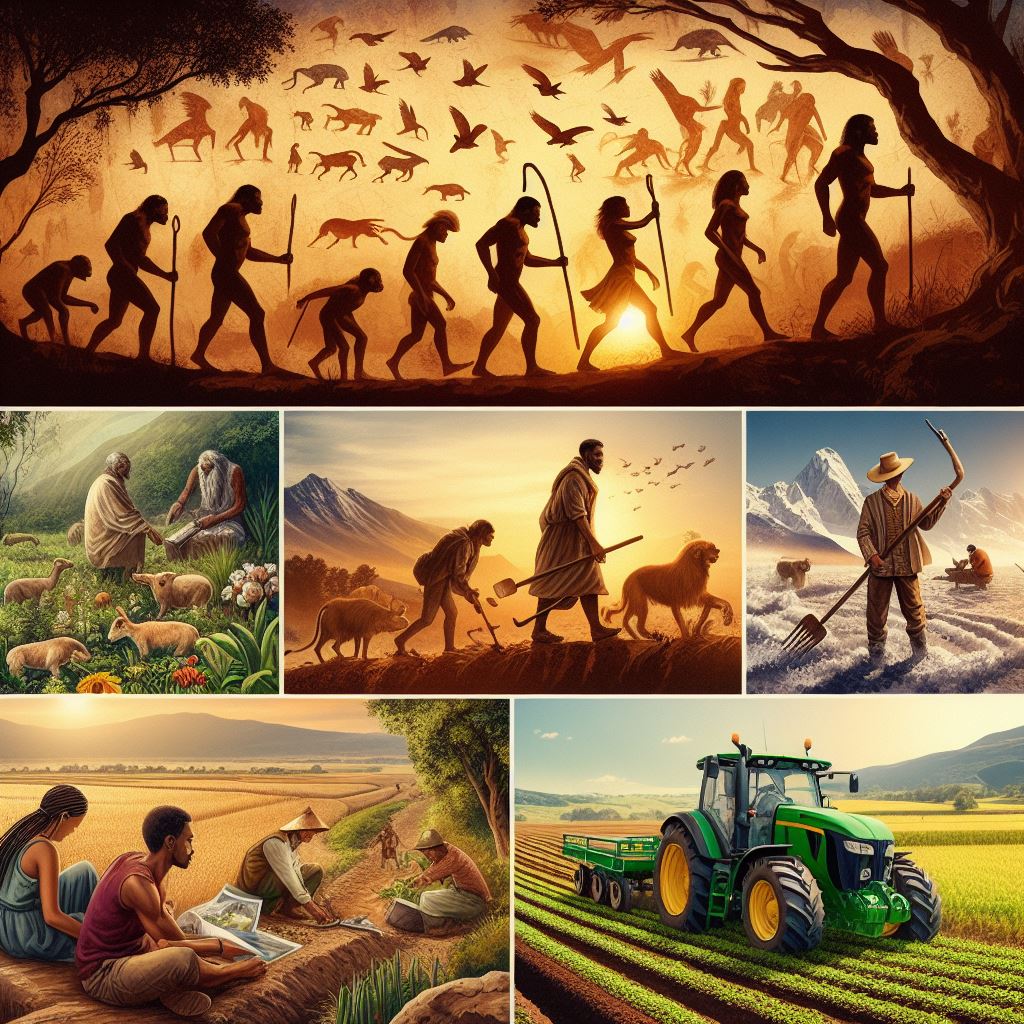
Successful farming also depends upon the establishment of a strong relationship between plants, animals and human farmers. Interaction evolved in the form of symbiosis. Symbiosis is the natural dependence of species on each other for food or protection, often becoming so dependent that individual species no longer survive alone.
For example, the relationship between Honeypot ants and Aphids, Aphids, tiny sap-sucking insects, extract nutrients from plant phloem and, in the process, produce a sugary substance called honeydew. Ants, in turn, are drawn to this honeydew, considering it a valuable food source rich in sugars and nutrients. Acting as protectors and farmers, ants guard aphid colonies against natural predators, such as ladybugs and parasitic wasps. This protective behavior ensures the sustained production of honeydew by aphids.
Doesn’t it sound similar to farming, like honeypot ants humans have learned for over 11000 years to herd and manipulate useful species like wheat, corn, castles, ships or gots.
Timeline-
10000 BCE:
- Around 10,000 BCE, humanity experienced a pivotal shift known as the Neolithic Revolution. This marked the transition from a nomadic, hunter-gatherer lifestyle to a settled, agrarian society.
- The Archeologist and Palentrologist have found the evidence of cultivation of specific plants, they also found the use of wild cereals and wild grains in the site of Ohalo II in Israel. During the same time the cultivation of crops such as wheat, barley, and legumes, along with the domestication of animals like cattle, sheep, and goats.
- Before domesticating animals certain conditions had to be fulfilled like it could not compete with humans for food, therefore animals fed on vegetation or leftovers could be the ideal options.
- Humans started domesticating animals by this time, the dog is considered one of the first animals domesticated by humans, as it was used in hunting and safeguarding communities.
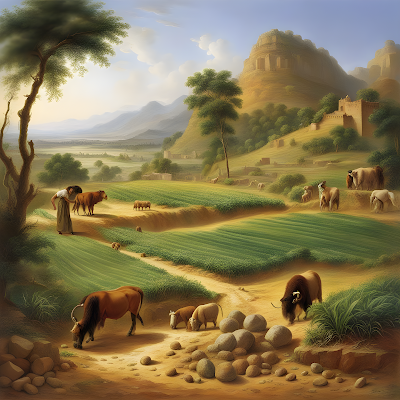 |
| Domestication of animals by early humans |
- The establishment of agriculture allowed for surplus food production, which, in turn, led to the growth of permanent settlements and the rise of complex societies.
8000 BCE:
- Agriculture took root in the Fertile Crescent, which is believed that the birthplace of agriculture spanning from the Nile River Valley to the Tigris and Euphrates Rivers (modern-day Middle Eastern).
- Archaeologists have found early evidence of the domestication of cows to access them for food like milk, blood, and meat or to carry loads or plow. Evidence is found in Archaeological sites in Africa, Indus Valley civilization in Pakistan, China, Mongolia, and Koria with a different timeline.
- The first grains, including wheat and barley, were cultivated in this region. These early agricultural practices laid the foundation for the world’s first farming communities and civilizations.
6000 BCE:
- Agriculture gradually spread to regions like Greece and Turkey, leading to the emergence of farming settlements. Farmers were cultivating wheat, barley, and legumes.
- Meanwhile, in the Indus Valley (present-day Pakistan and India), agriculture flourished along the mighty Indus River. Farmers here cultivated a diverse range of crops, including wheat, barley, peas, sesame seeds, dates, rice, and cotton. Evidence suggests sophisticated irrigation systems were in use, allowing for intensive cultivation and supporting the growth of bustling settlements like Mohenjo-daro and Harappa.
- As agriculture expanded, societies became less reliant on hunting and foraging for sustenance, paving the way for more stable and structured communities.
5000 BCE:
- In Egypt, agriculture thrived along the banks of the Nile River. The rich silt deposited by the annual floods made the land fertile.
 |
| Irrigation system in ancient Egypt |
- The development of sophisticated irrigation systems allowed farmers to control water flow and cultivate crops more efficiently.
4000 BCE:
- The Plough is believed to be discovered by the Sumerians of Mesopotamia.
- Initially, plows were simply forked tree limbs that aided in tilling the soil and sowing grain seeds. The plows made it possible to utilize the power of bulls to cut into land for cultivation.
- Fruit cultivation, including mangoes and oranges, also became prevalent within the same millennium, contributing to the region’s agricultural diversity.
3000 BCE:
- China saw the spread of agriculture, marked by the development of the plow and the cultivation of crops such as millet and soybeans.
- Maize was first domesticated in America, but some Archaeological evidence suggests its much older development. Agriculture also developed independently on the island of New Guinea.
- By this time Sugar Cane, turmeric, Caramom, pepper and mustard were harvested by early Indians. The fermentation of Dough, grains and Fruits Juice also developed by this time.
1000 BCE:
- By the timeframe 3000BCE-1000BCE, many important discoveries happened which led to further development of agriculture, like harnessing the power of windmills for different applications and the discovery of seed drills by the Babylonians.
- Iron tools became widespread in agriculture, revolutionizing farming techniques and increasing productivity. Iron implements were more durable and efficient than their predecessors.
- Sugarcane originated in New Guinea and it was known since 6000 BCE, later on, along with human migration it spread to Southeast Asia, India and the Pacific.
- Initially, Sugarcane was grown for the sole purpose of chewing. The production of sugar by boiling sugarcane juice was discovered first in India.
- The oldest sugar records are found in the Indian scripture Atharva Veda (1500-800AD). The word sugar is derived from the ancient Sanskrit word Sharkara.
1000-1400 CE:
- The Medieval Agricultural Revolution brought advancements in crop rotation, animal husbandry, and the use of fertilizers. These practices improved soil fertility and crop yields.
- By adapting new technologies farmer improved their production, instead of throwing seeds randomly in the soil, the Chinese started individual seeds in rows. It increases the growth rates (the earlier half of the seeds would not grow). This practice allowed intensive hoeing, which reduces weeds.
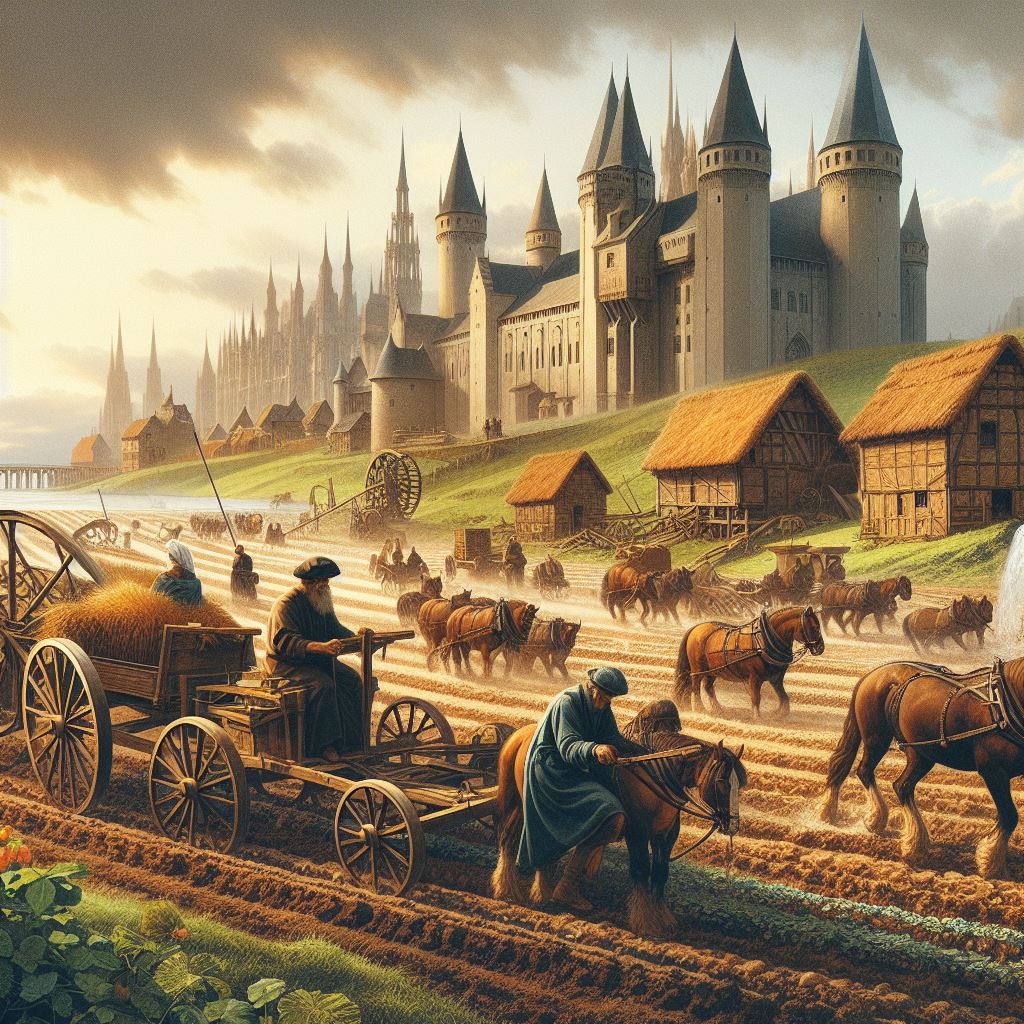
- Innovations like the three-field system, which allowed for better land management, were instrumental during this period.
- Arab agricultural revolution happened during the 13th century, Islamic traders spread across the globe adapting different farming techniques. Crops from Africa like Sorghum, from China Citrus fruits and a variety of crops from India such as sugarcane, mangos, rice and cotton were distributed throughout Islamic land.
- The idea of growing plants in a controlled environment existed in Roman times, but the first practical greenhouse was built in Italy in the 13th century to grow exotic plants brought by explorers from the tropics.
18th-19th centuries:
- The Industrial Revolution marked a significant shift in agriculture. Mechanization of farming processes, the development of chemical fertilizers and pesticides, and the use of new technologies such as the seed drill and steam engine increased agricultural productivity.
- The first British agricultural revolution during the 18th and 19th centuries saw massive production growth.
- Growing the same crop multiple times will degrade the soil fertility, by practicing crop rotation farmers avoid the decrease of different nutrients in the soil. British agriculturist Charles Townshend promoted a four-year crop rotation with rotation of Barely, Wheat, Clover, and Turnips.
- Cotton Gin or Cotton Engine was invented by American Inventor Eli Whitney in 1793 to mechanize cotton fiber production. Before the mechanization, Cotton Gin was present in India which was known as Charkha.
- Chemist Justus von Liebig played a big role in understanding how plants get their nutrients. He disagreed with the idea that plant food comes from decayed plants and instead talked about the importance of ammonia and minerals. In England, his ideas didn’t work out, but later, Sir John Bennet Lawes and Sir Joseph Henry Gilbert made practical use of them, creating a research station to study fertilizers and their impact. They were followed by others who figured out how to make fertilizers more efficiently, like using nitrogen to make ammonia. This helped a lot in producing fertilizers that help crops grow.
- John Deere first cast steel Plow which became more popular, making farming more efficient and less labor-intensive.
20th century:
- The 20th century brought about rapid technological advancements in agriculture. Genetic engineering, precision agriculture, and modern machinery transformed farming practices.
- Since before 2,500 BC, humans have been using pesticides like Sulfur, Arsenic, Mercury and lead to protect their crops. In the year 1939 Paul Muller discovered that DDT (Dichloro-Diphenyl-Trichloroethane) is a very effective pesticide, it is a widely used pesticide around the world. Although it is very useful for pest control but has negative health and environmental impacts.
- Transgenetic plants are the next breakthrough in agriculture, transgenic plant is a plant that has been genetically modified by introducing genetic material from another species using recombinant DNA technology. The first successful experiment involving the transfer of a foreign gene into a plant occurred in the early 1980s.
Increased Crop Yields: Transgenic plants often carry traits that enhance resistance to pests and diseases, leading to increased crop yields. This is especially important in regions facing challenges from various agricultural pests.
Reduced Dependency on Chemicals: Some transgenic plants are engineered to be resistant to specific herbicides, allowing farmers to control weeds more effectively without harming the crops. This can result in reduced overall chemical usage and environmental impact.
Improved Crop Quality: Genetic modification has been used to enhance the nutritional content of crops, providing better quality and more nutritious food options.
Environmental Sustainability: By reducing the need for extensive pesticide and herbicide applications, transgenic plants contribute to more sustainable and environmentally friendly agricultural practices.
21st century:
In the 21st century, there has been a growing emphasis on sustainable agriculture. Practices like organic farming, agroforestry, and conservation agriculture aim to reduce the environmental impact of farming while promoting healthier, more nutritious food production.
Sustainability and environmental concerns have become central issues in modern agriculture. The development of agriculture is a testament to human innovation and adaptation, shaping societies and economies throughout history. Today, agriculture continues to evolve as we seek to balance the need for increased food production with environmental sustainability and the well-being of future generations.
While this timeline is not exhaustive and agriculture has evolved at different rates in different regions, it provides a broad overview of the key milestones in the history of agriculture.
Advances in Agriculture
Tools and methods used by farmers changed along with agriculture. Farmers in ancient Egypt developed an irrigation system to water their crops, enabling them to cultivate the arid area next to the Nile River. The plow was invented in ancient China by farmers to transform the soil and boost crop harvests.
Here are some exciting advancements shaping the future of agriculture:
Precision Agriculture:
- Utilizes technology like drones, sensors, and data analysis to tailor fertilizer, water, and pest control to specific areas within a field, optimizing resource use and reducing waste.
- Technologies like soil sensors and satellite imagery offer real-time insights into crop health and environmental conditions, enabling farmers to make informed decisions.
Vertical Farming:
- Growing crops in stacked indoor layers under controlled conditions like temperature, light, and humidity.
- Offers space-efficient food production in urban areas, reduces water usage, and minimizes environmental impact.
Robotics and Automation:
- Utilizing robots for tasks like planting, weeding, and harvesting, increases efficiency and reduces labor costs.
- Autonomous drones can be used for spraying, crop monitoring, and pollination, further streamlining farm operations.
Gene Editing and Biotechnology:
- CRISPR-Cas9 and other gene editing tools allow scientists to modify crops for increased disease resistance, improved yields, and enhanced nutritional value.
- Advances in plant genomics and synthetic biology offer the potential to develop entirely new crops with desirable traits.
Sustainable Practices:
- Regenerative agriculture focuses on building healthy soil through practices like cover cropping, composting, and crop rotation.
- Precision irrigation techniques minimize water waste, while biofertilizers and pest control alternatives offer environmentally friendly solutions.
Smart Foods and Precision Nutrition:
- Developing crops with higher levels of vitamins, minerals, and other essential nutrients to address malnutrition and improve public health.
- Personalized nutrition approaches use genetic and health data to tailor dietary recommendations for individuals.
The Industrial Revolution
The Industrial Revolution in the 18th and 19th centuries had a significant impact on the agriculture sector. Technological advances, such as the steam engine, made possible the mechanization of farming, which increased productivity and efficiency. The use of fertilizers and pesticides in farming which improves productivity and attacks of parasites on crops became more widespread during this time, allowing farmers to produce even more food.
However, these technological advances come with a cost. The increased use of fertilizers and pesticides led to environmental impact and the loss of biodiversity, which has instinct many plants insects, and other animals. Fertilizers & pesticides also polluted land and water sources and poisoned aquatic life. The use of modern types of machinery in industrial agriculture became increasingly reliant on fossil fuels and unsustainable farming practices.
Modern-Day Agriculture
Today agriculture continues to develop new techniques and methods to meet the large requirement of food for the growing population. Many farmers are adopting Sustainable agriculture practices and becoming more popular, farmers are adopting methods such as organic farming and agroforestry, as farmers try to reduce their environmental impact and produce healthier, more nutritious food without the use of chemical fertilizers or pesticides.
Excessive use of pesticides led to increasing the possibility of the development of deadly diseases like cancer, Technological advances, such as genetic engineering and precision agriculture, are also changing the face of modern agriculture. Precision agriculture uses data and technology to optimize crop yields and reduce waste, while genetic engineering allows for the creation of crops that are more immune to pests and diseases. This reduces the use of harmful, toxic chemicals and fertilizers to improve the productivity of crops.
How Agriculture Has Changed the World
Agriculture has been a very important factor in shaping human civilization and has had a profound impact on the world in many ways. bellow are a few ways agriculture has changed the world:
Development of Civilizations:
During the Paleolithic period, the average human required an area of around 2 Square Km to find food and support themselves. Humans started living in larger and denser concentrations in new types of communities like villages or towns. The domestication of plants and animals allowed humans to settle in one place and develop permanent settlements, and cities leading to the birth of civilizations. Agriculture made it possible to produce a surplus of food, which in turn allowed for the growth of larger populations and the establishment of cities.
Economic Growth:
Agriculture has been a major driver of economic growth throughout history. The production of food, fiber, and other agricultural products has created jobs and driven trade and commerce, leading to the growth of cities and economies.
With assured food security, individuals could specialize in crafts, professions, and services unrelated to farming. This created a complex web of economic interdependence, where farmers exchanged their produce for the skills and goods of others, enriching overall societal wealth.
Human Evolution:
The shift to agriculture is believed to have influenced human evolution. Agriculture provided a more stable and dependable food source compared to the hunter-gatherer lifestyle. This led to a decline in food scarcity and malnutrition, ultimately contributing to increased average lifespan and a surge in population growth.
With softer, processed food becoming more prevalent, the demands on our facial muscles and teeth shifted. This, along with factors like smaller family sizes and reduced physical activity, is believed to have contributed to several evolutionary changes:

- Smaller jaws and teeth: Due to less reliance on chewing tough foods, jaws may have gradually become smaller and teeth potentially less robust.
- Brain size: Some studies suggest a possible link between increased cranial capacity and the complex cognitive demands associated with agriculture, such as managing crops, trade, and social structures.
- Bone density: Changes in activity levels and dietary factors might have influenced bone density in some populations.
Understanding the interplay between agriculture and human evolution is an ongoing field of research, with new discoveries and interpretations emerging continuously. Some aspects remain controversial, with debates on the relative influence of different factors and the long-term implications of these changes.
Read more about it- Smithsonian National Museum of Natural History
Environmental Impact:
Agriculture has both positive and negative environmental impacts. It has led to the transformation of landscapes, excessive use of fertilizer has hardened the soil and reduced its fertility, polluted air and water, and emitted greenhouse gases, creating health and environmental risks. The use of pesticides and fertilizers stimulates growth and kills insects and wee. Still, they not only pollute the air, water, and soil but also can harm non-targeted organisms like plants, fish, birds, and beneficial insects like bees.
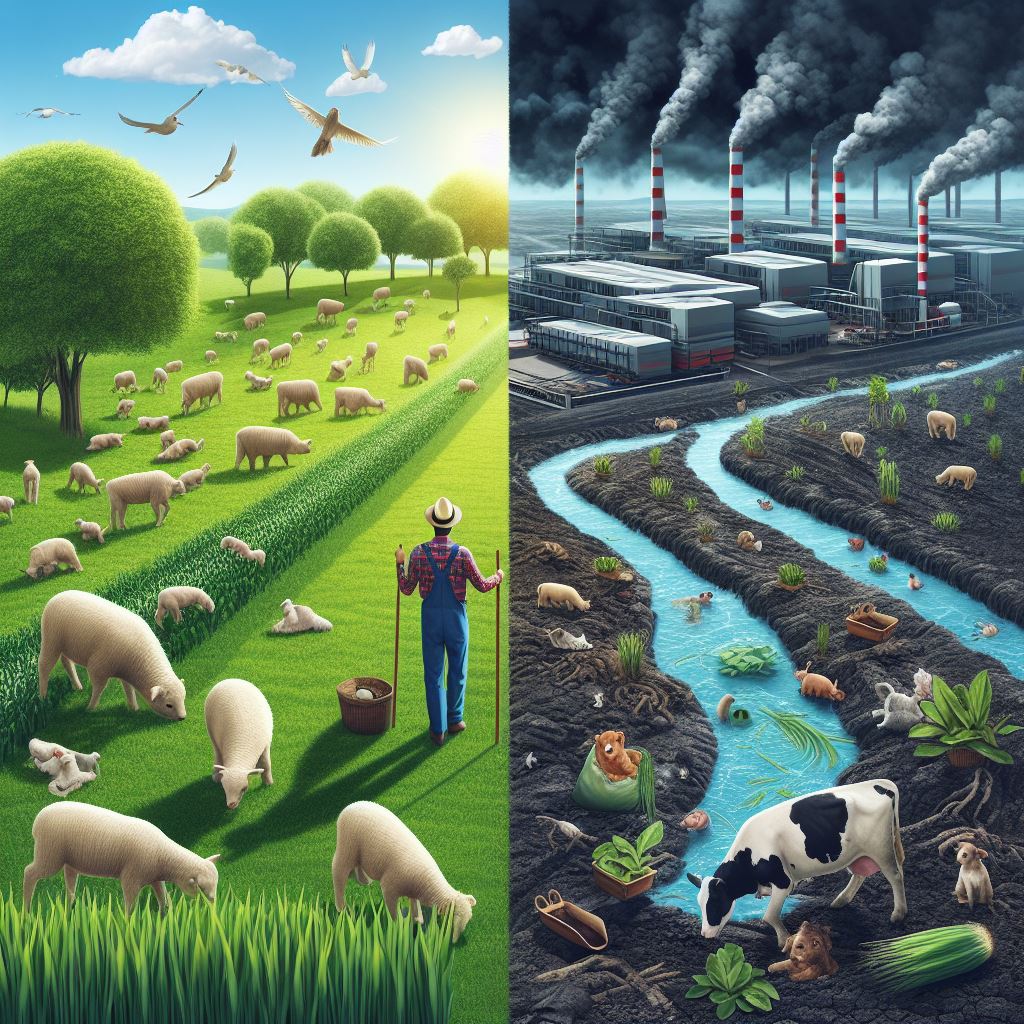
- Intensive farming practices often involve monoculture, planting the same crop repeatedly on the same land. This depletes soil nutrients, weakens its structure, and increases susceptibility to erosion. Wind and water can then carry away fertile topsoil, reducing agricultural productivity and contributing to sedimentation in waterways.
- Deforestation also plays a significant role in climate change. Trees act as carbon sinks, absorbing and storing greenhouse gases. Clearing them releases these gases back into the atmosphere, accelerating global warming and its associated impacts.
- Agriculture itself contributes to climate change through emissions of methane from livestock, nitrous oxide from fertilizers, and deforestation. Climate change, in turn, disrupts weather patterns, increases the frequency and intensity of extreme weather events like droughts and floods, impacting crop yields and agricultural productivity.
- Agriculture is a thirsty industry, consuming vast quantities of water for irrigation. In arid regions, this can lead to overexploitation of groundwater resources, causing aquifer depletion and jeopardizing water security for humans and ecosystems alike.
However,
sustainable farming practices, such as organic farming and agroforestry, can reduce environmental impact and promote biodiversity. In sustainable farming, farmers use alternatives to agrochemicals for maintaining soil fertility and dealing with pests and diseases.
Technological Advancements:
Agriculture has been a catalyst for technological advancements throughout history. Introduction to machinery like tractors, Pumps for irrigation, genetic modification in plants and animals, and modern methods of cultivation have increased production drastically. The plow, irrigation systems, and the use of fertilizers and pesticides were all major innovations that helped increase productivity and yield. For thousands of years farmers relied on natural fertilizers like wood ash, fish and parts of ground bones and bird and bat west called guano to increase nutrients in the soil. In modern times, precision agriculture and genetic engineering are changing the face of farming yet again. For centuries farmers have bred new types of plants and animals through random experiments in history to increase productivity.
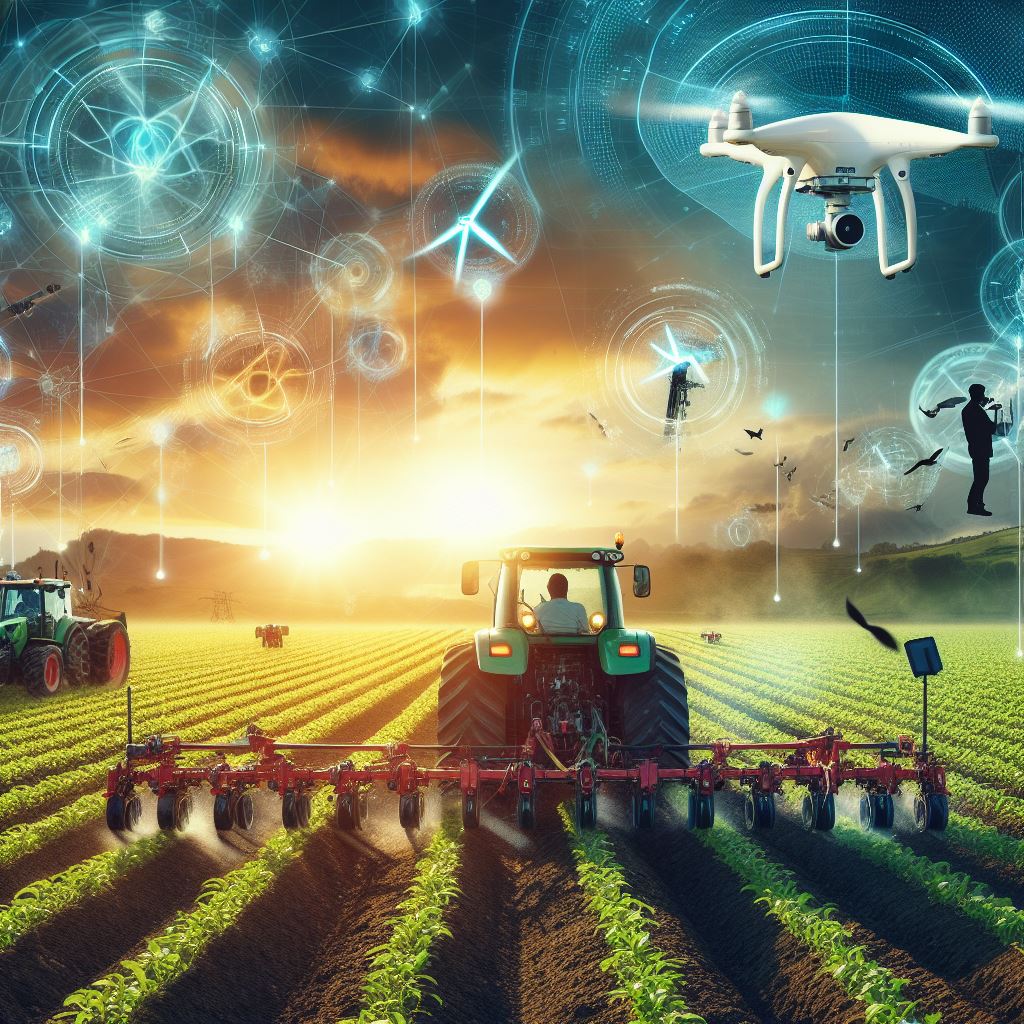
Conclusion
The history of agriculture is a story of human progression and innovation. From the hunter-gatherers to the earliest domestication of plants and animals to modern-day industrial farming, agriculture has been a key driver of human growth. The discovery of agriculture has allowed humans to settle and civilized. As we continue to face new challenges, such as climate change and food security, the future of agriculture will be shaped by new technologies and sustainable practices. By working together, we can ensure that agriculture continues to feed and nourish us for generations to come.
Check out my other blogs for more great content! Thanks for reading!


